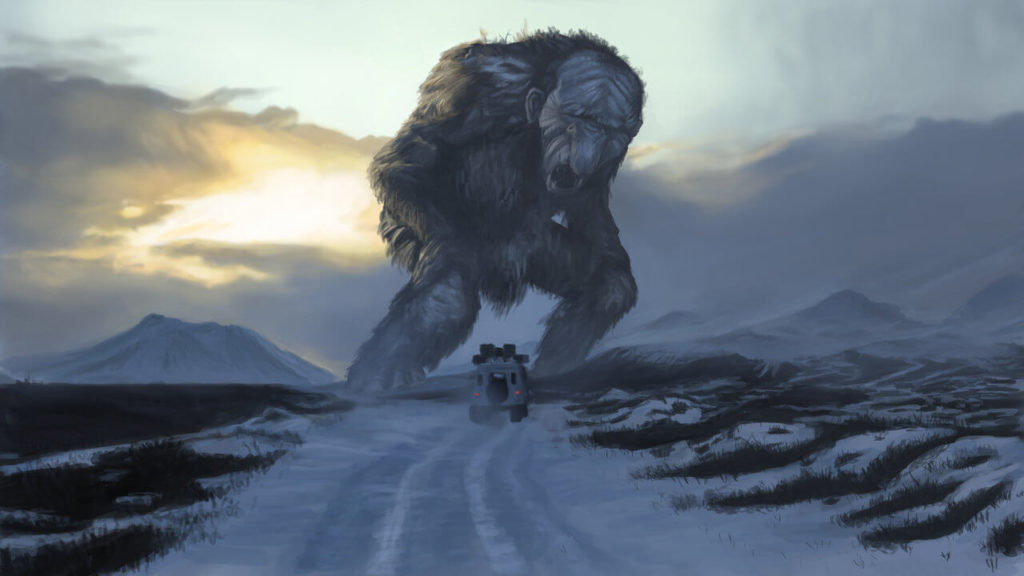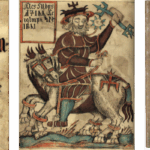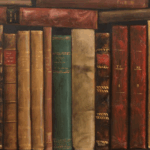Some of the most interesting characters in Norse mythology are not the powerful gods.
But rather the creatures that constantly appear to challenge the gods and terrorise men.
Norse mythology – including the stories of Odin, Thor and Loki – was the basis of the religion of the Viking warriors that plundered Europe from the 8th to the 11th centuries. The religion went into decline around a thousand years ago when Christianity swept through the north of Europe. But Norse mythology, with its compelling stories, complex characters and terrifying monsters, never really lost its foothold in Scandinavian thought and has heavily influenced contemporary literature, television and games.
here’s our new youtube video about the whole monster list:
1. Draugar
The Draugar are the undead of Norse Mythology. Although some stories describe them as drinking blood creature, they are more like zombies (monsters) than vampires.
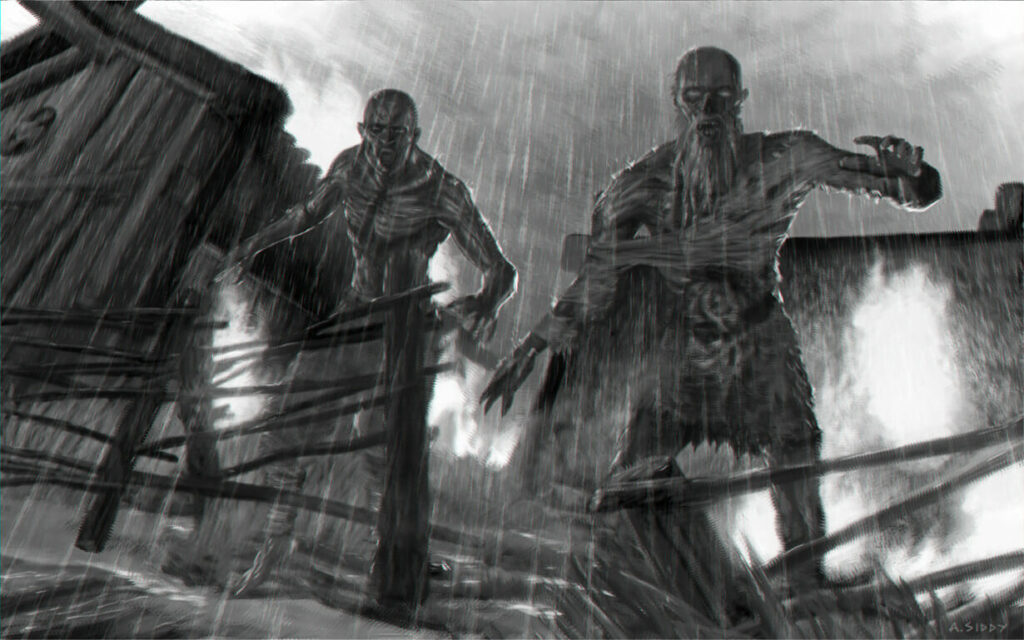
The Draugar possess superhuman strength and can increase their size at will, but they cannot shake the unmistakable stench of decay and have the hideous visage of a dead body.
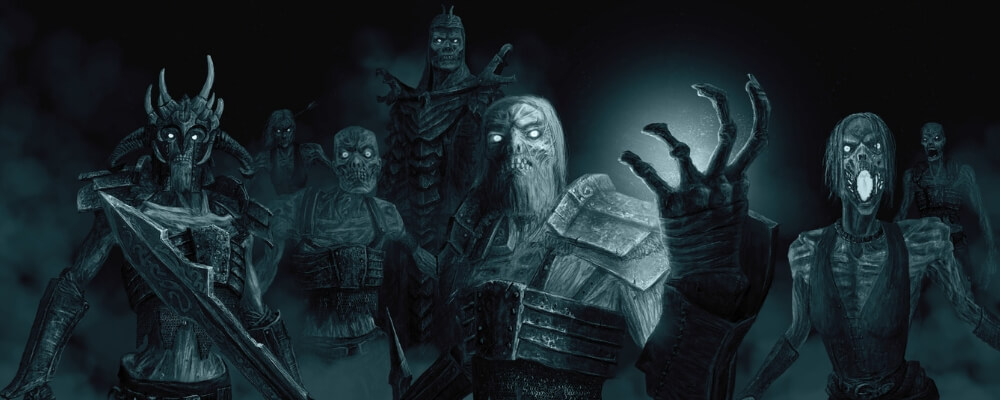
The Draugar creature often live in their graves in order to defend the treasure that they were buried with, but they are also known to enter communities in order to wreak havoc on the living, often tormenting those who wronged them in life.
They can kill by crushing someone with their superior strength, eating their flesh, eating them whole in their enlarged state, or kill indirectly by driving a person mad. These creatures were said to be able to enter the dreams of the living in order to torment them, and would always leave behind a gift to show the victim that the encounter was real.
The Draugar can be killed, and suffer a second death, if their bodies decay too much, or if they are burned, dismembered or otherwise destroyed. It was believed that evil, greedy or unpopular people were most likely to become Draugar after death.
2. Dwarves
Common to both Norse and Germanic mythology dwarves, or dark elves, are small misshapen creatures that originated as maggots from the corpse of Ymir, the first of the Norse giants, and gifted with reason by the gods of Asgard.
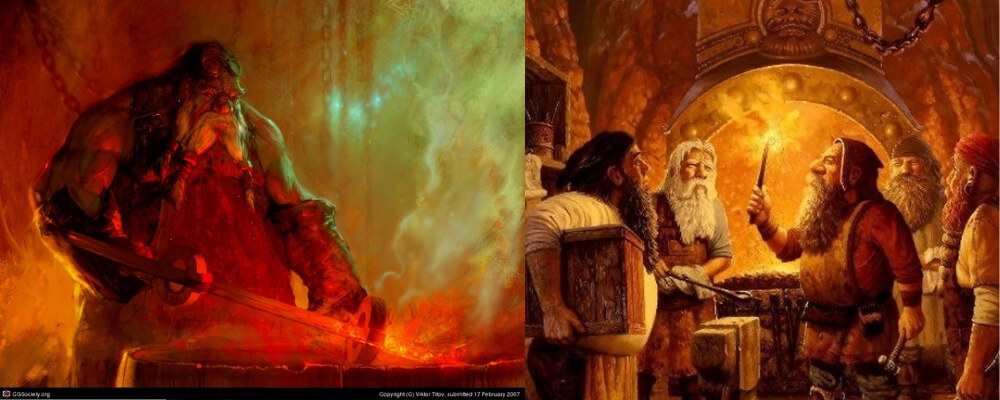
They lived underground in a place called Svartalfheim, which was thought to be a warren of mines and forges. They were said to have crafted the finest weapons and jewellery, including Mjolnir, Thor’s hammer, Gungnir, the spear of Odin, and the long golden hair of Thor’s wife.
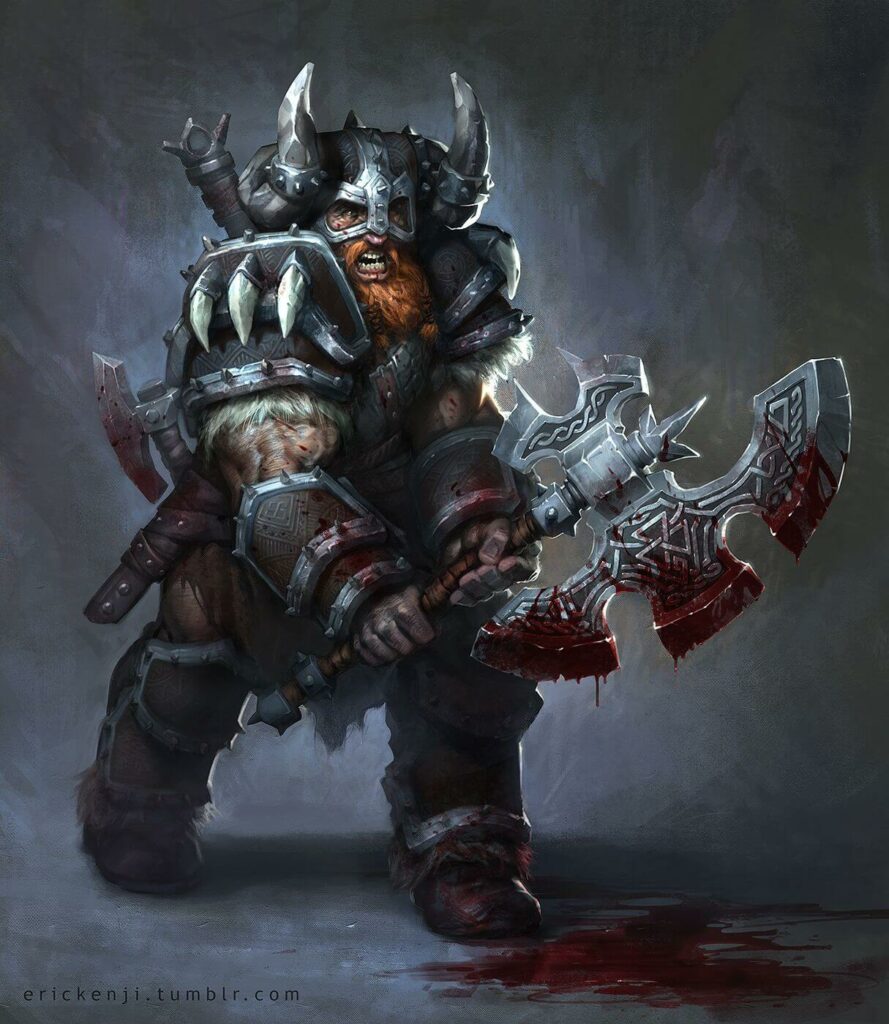
In some myths, dwarves creatures are portrayed as turning to stone if exposed to sunlight. For example, one dwarf named Alviss is said to have claimed the hand of Thor’s daughter in marriage, but he was tricked into talking until daybreak, when he was hit by sunlight and turned to stone.
3. Elves
There are two different types of elves in Norse mythology, the Dokkalfar, or dark elves creature, and the Ljosalfar, light elves creatures. The dark elves are thought to be the same as dwarves and dwell under the earth and be almost black to look at.
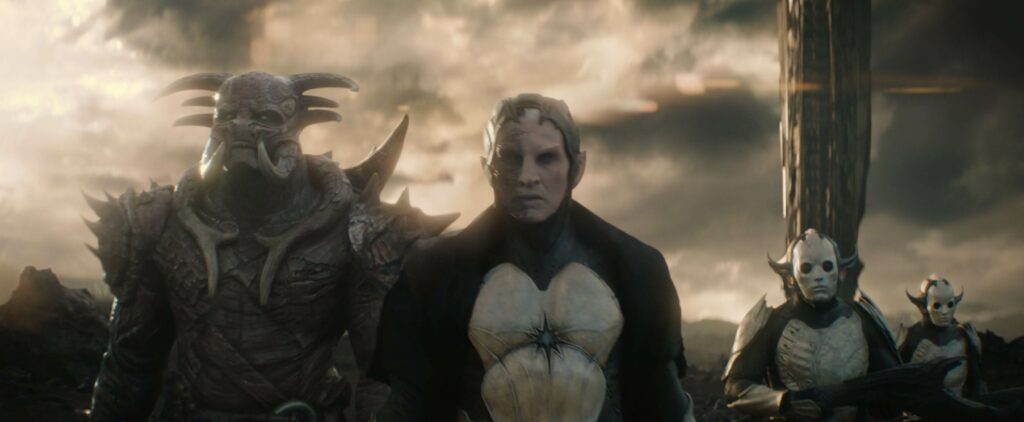
Light elves on the other hand were described as more beautiful to behold than the sun. Light elves were often considered much like the gods of Aesir and Vanir, and the Vanir god Freyr was the lord of the elven homeland of Alfheim.
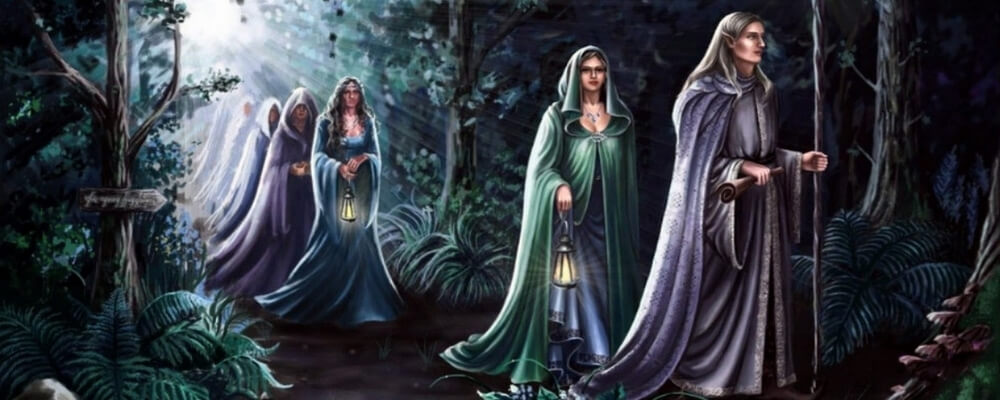
Elves are generally described as having ambivalent relationships with humans. They could both cause human disease and had the power to heal. Humans and elves were thought to have occasionally interbred to produce children with the appearance of humans but that possess extraordinary intuitive and magical powers.
4. Fenrir
Fenrir was the most famous of many wolves creature mentioned in Norse mythology. He was the son of the god Loki and the giantess Angrboda.
Find more info on Fenrir the wolf of norse mythology in our article.
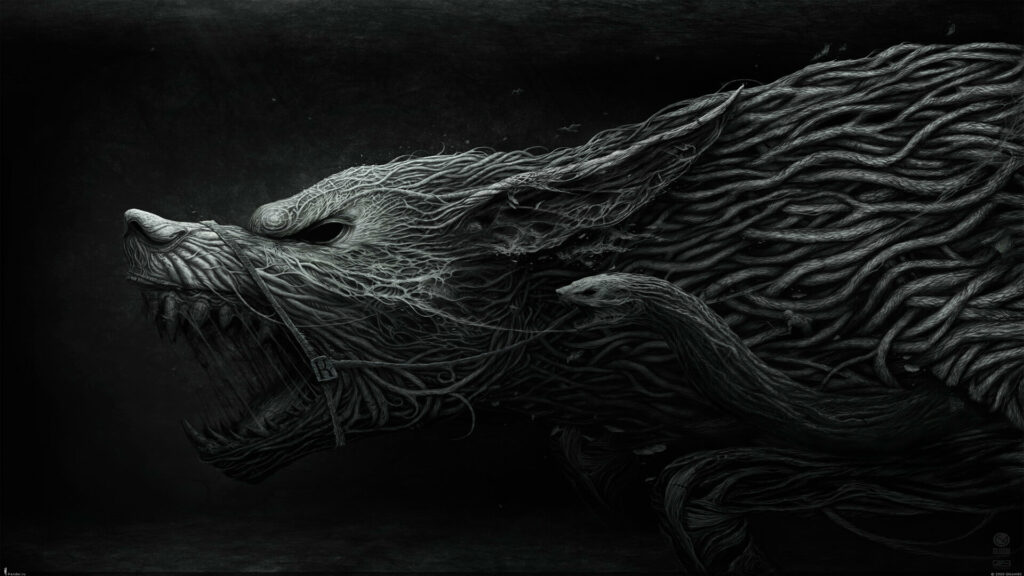
The gods of Asgard raised Fenrir in order to stop him from wreaking havoc across the nine worlds, but he grew quickly and caused so much trouble that they decided to chain him up.
The gods convinced Fenrir to let them chain him up by pretending that they were playing a game to see how strong he was. Fenrir easily broke every bond. Eventually the gods had the dwarves make a special chain, that was stronger than any known, but appeared light.
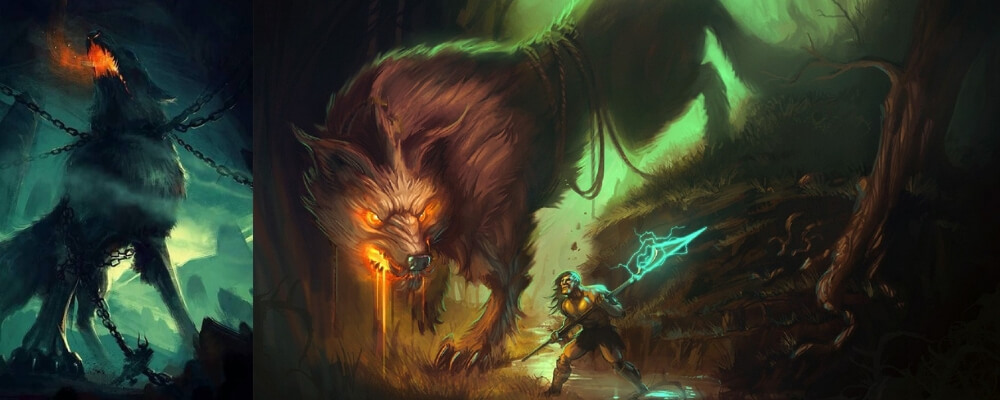
Fenrir was suspicious of this chain and demanded that one of the gods put his hand in his mouth while he was being chained as a sign of good faith. The god Tyr agreed to this, even though he knew he would lose his hand. When Fenrir realised that he had been tricked, he did indeed take the hand of Tyr. Meanwhile the gods chained him to a boulder and placed a sword in his jaws to keep them open. The resulting drool formed a foamy river called Expectation.
The ominous name of the river Expectation appears to be a reference to Ragnarok, the end of the world in Norse mythology, when Fenrir will break from his chains and get his revenge. Fenrir is also said to be the father of Skoll and Hati, other giant wolves that chase the sun and the moon respectively. It is also said that when Ragnarok comes, they will finally
catch their targets and devour them.
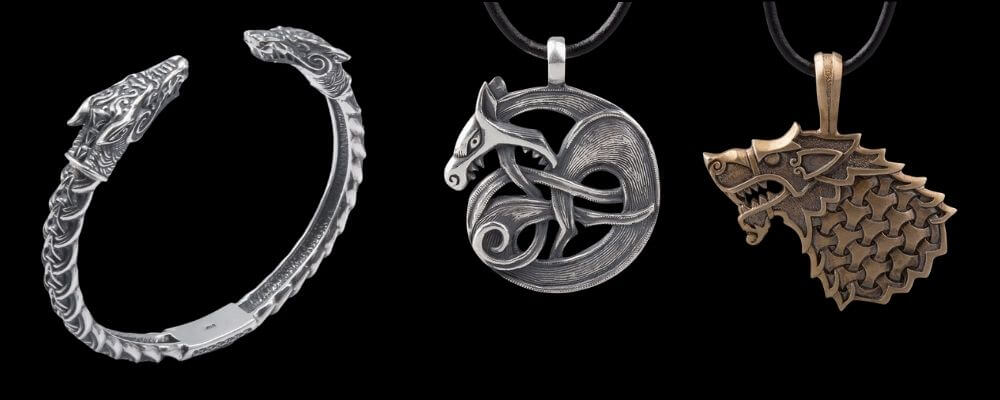
5. Fossegrimen
The Fossegrim, also known simply as the grim, is a water spirit and creature. He plays the fiddle with incredible talent, mimicking the sounds of the forest, wind and water. He can be induced to teach the skill.
He usually requires an offering, perhaps a white goat thrown with its head turned away into a waterfall that flows northwards, or smoked mutton stolen from the neighbours’ storehouse four Thursdays in a row.
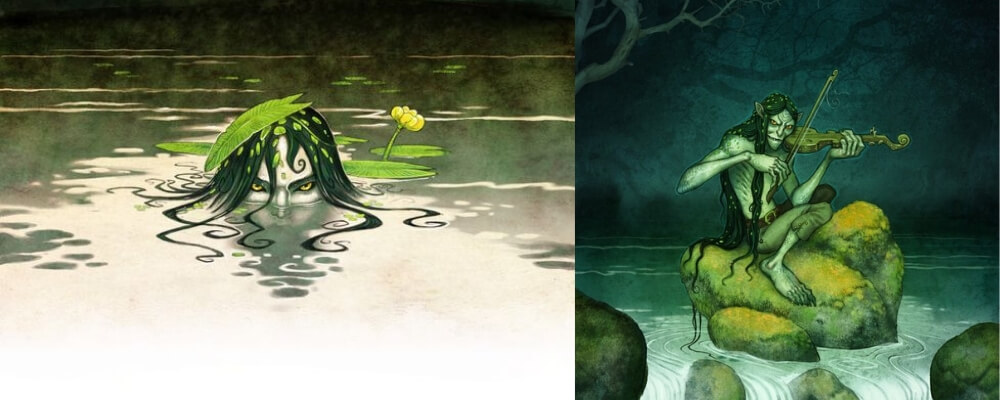
If there is not enough meat on the bone, the grim will only teach the supplicant how to tune the fiddle. If the offering is deemed sufficient, he will take the pupil’s right hand and draw them along the strings until they bleed.
6. Huldra
The Huldra are wardens of the forest, part of a group of Ra that protect various different locations. The female Hudra are always described as incredibly beautiful and seductive, but with the long tail of a cow and their back covered in bark.
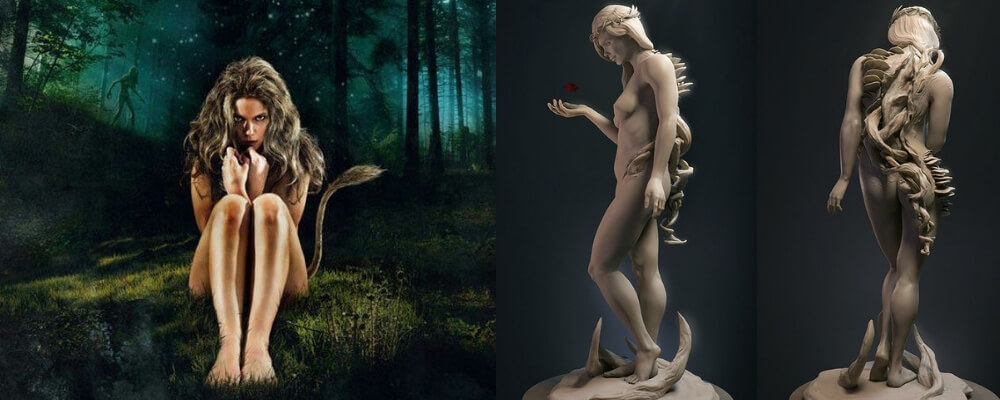
The Huldra can disguise themselves as young women to walk in the world of men. The power of their illusion is only broken if someone sees their tail. They visit communities in order to lure young, unmarried men into the forest where they are kept as slaves, lovers, or sometimes the Huldra will suck the life out of them. If one of their victims is set free or escapes, they will forever live norswith the temptation to return to their captor.
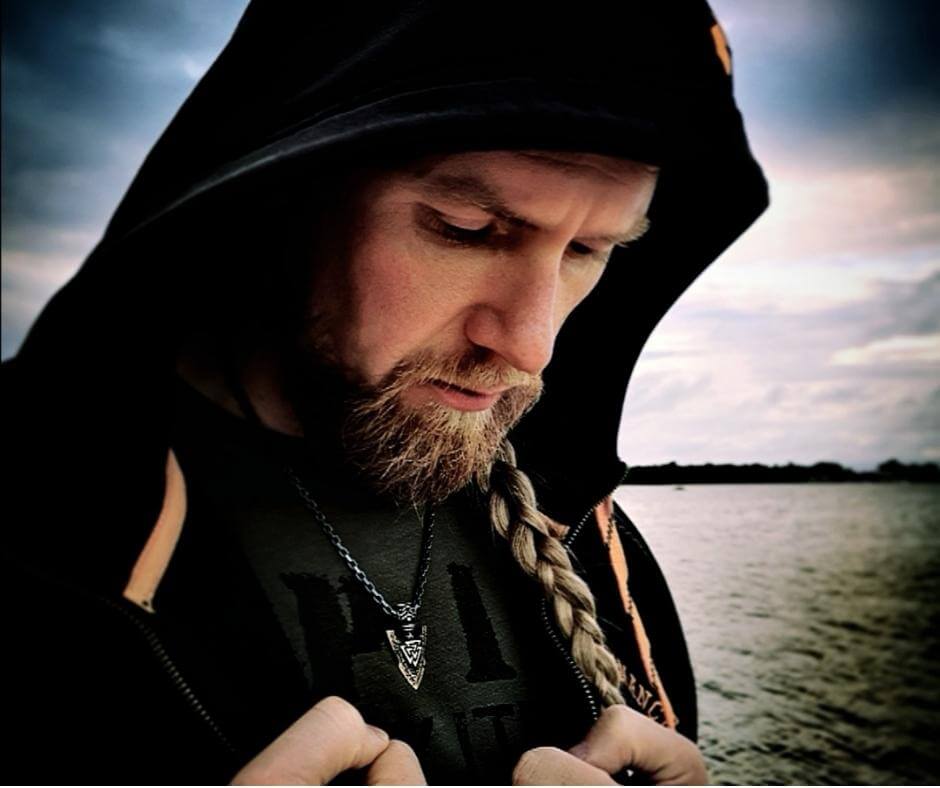
Get Your Handcrafted Jewelry
Necklaces, Bracelets, Pendants, Rings
Get -5% Off using code ” B5 “
7. Jormungandr
Also known as the Midgard Serpent, the Jormungandr is another of the children of Loki and Angrboda. He is a snake or dragon that lives in the sea that surrounds Midgard, the visible world of humans. It is said that Odin tossed him into the water to keep him out of trouble. But this creature grew so large that he was able to surround the whole of Midgard and grasp his own tail.
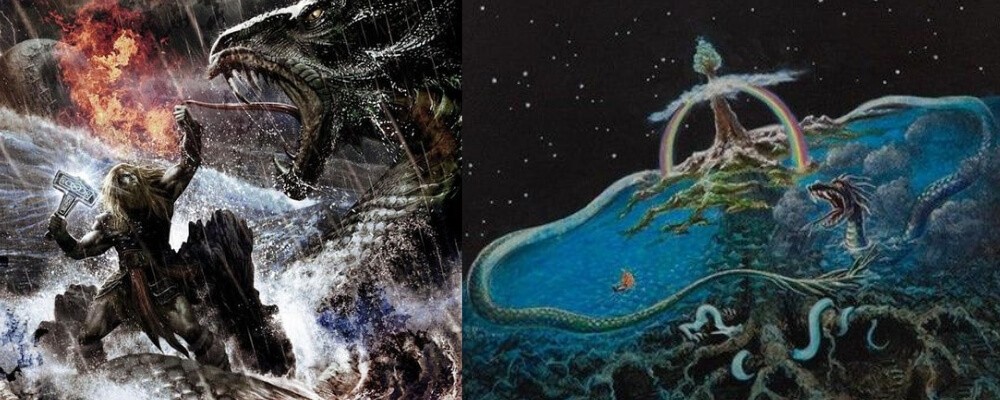
He is described as an enemy of Thor. In one story Thor was fishing with the giant Hymir, but not satisfied with the whales that Hymir caught in his favourite fishing spots, Thor insists on going further out to sea, where he catches Jormungandr on his hook. He pulls the serpent out of the water and they come face to face, with Jormungandr dribbling poison and blood. Hymir is so appalled by the scene that he cuts the fishing line before Thor can kill the serpent with his hammer, and the serpent returned to the sea. It is also said that Thor and Jormungandr are fated to slay one another during Ragnarok, when the serpent will emerge from the sea and poison the ocean and the sky.
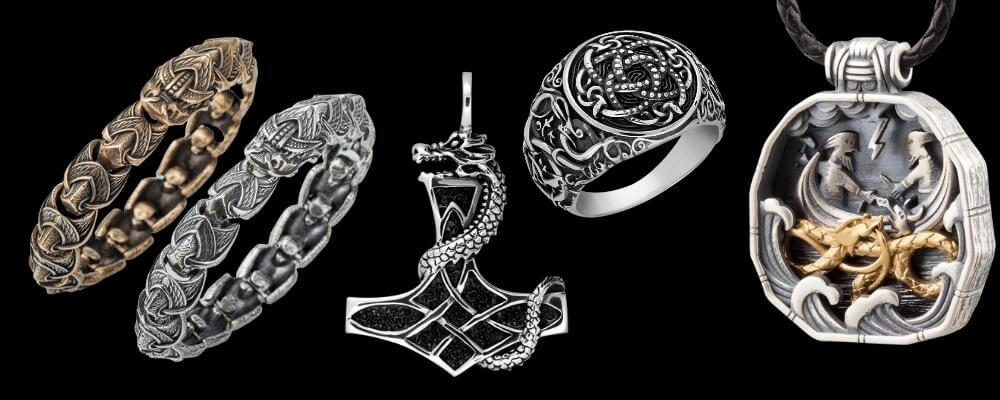
8. Jotnar
The Jotnar are the giants of Norse mythology and are described as having powers that rival that of the gods. Rather than referring to their size, the name Jotnar means ‘devourers’.
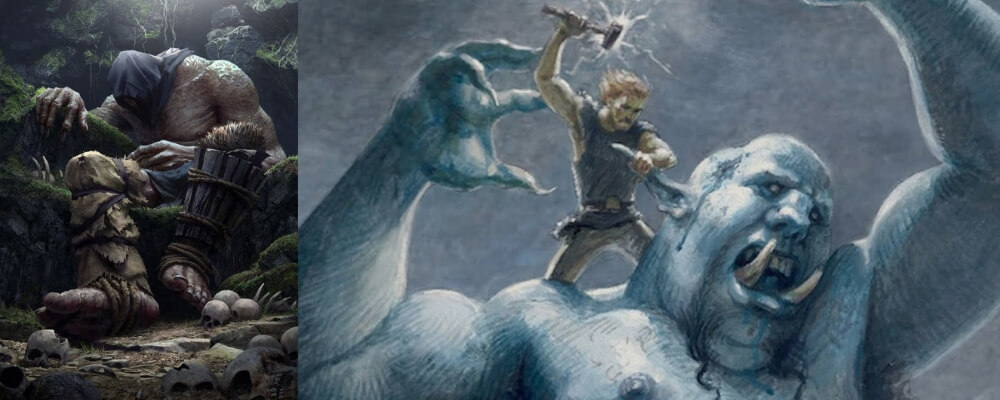
They are the enemy of the gods, and as the Asgardian gods represent order, the Jotnar embody chaos. Nevertheless, many of the Asgardian gods are descended from the Jotnar. Odin is half Jotnar, and Thor three-quarters Jotnar. The Asgardian gods do not seek to kill the Jotnar, but to keep them in check so that the universe remains in balance.
The role of balance in the universe is reflected in the Norse creation myth in which the gods construct the cosmos from the corpse of the slain Jotnar Ymir.
9. Kraken
The Kraken are aquatic monsters that are said to dwell off the shores of Norway and Greenland. They are often depicted as gigantic octopi or squids, and some stories suggest that they were so big that their bodies could be mistaken for an island.
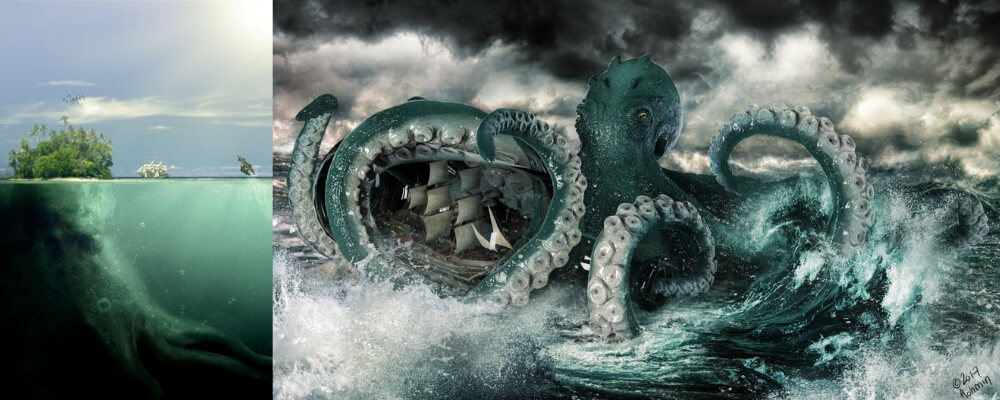
If men were drawn to the island, it would sink when they set foot on it, killing them and leaving them as food for the Kraken. When it rose to the surface it was believed to cause large whirlpools which would help it attack ships.
The Kraken mostly ate fish. They would lure fish to them by releasing their bowels into the water. Their excrement was so thick and smelled so strongly, of fish that it would draw many other fish to the area for the Kraken to devour.
10. Mare
The Mare monster gave people bad dreams at night by sitting on them in their sleep. It was believed that the Mare were the souls of living people which left their bodies at night like demons.
Often these were witches, whose souls took the forms of animals, but normal people, in particular adolescents, were also thought to become Mare when their spirits wandered. The idea that the soul wandered at night was a common phenomenon. Odin’s soul wandered so often that he worried that one day it may not return to his body.
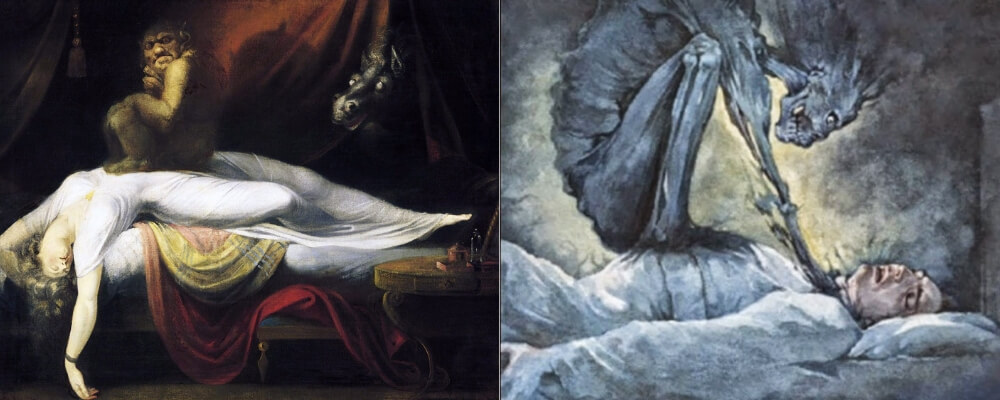
It was also believed that when the Mare touched a living thing, people, cattle or trees, it would cause their hair to become entangled.
This was probably used to explain Polish plait phenomenon, which is a hair disease. It was also said to be why the branches and roots of some trees became entangled.
11. Norns
The Norns are female beings and creatures that create and control fate, even the fate of the gods. They would appear at each birth to weave their thread of fate by casting wooden lots, weaving a piece of cloth or carving symbols into wood.
The Norse appeared to have believed that fate was blind and implacable, and there is no evidence of anyone ever impeaching the Norns to change their fate.
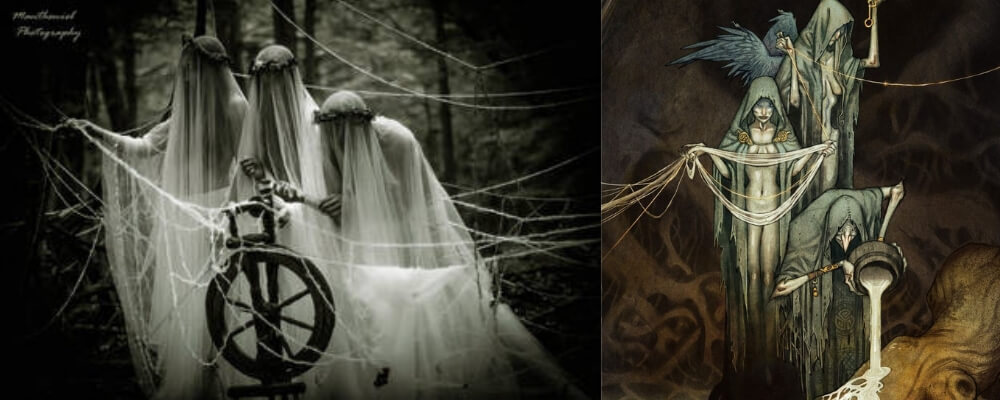
The three principal Norns also served as the caretakers of the tree of life that holds the nine worlds of Norse mythology. Their care only slows the death of the tree, as a cornerstone of Norse myth is that all things eventually come to an end. All existence will end with Ragnarok.
12. Ratatoskr
Ratatoskr is a squirrel that runs up and down the tree of life, delivering the messages of the gods. However, he is mischievous, and enjoys stirring trouble between the wise eagle that sits at the top of the tree and the hungry dragon that dwells in its roots.
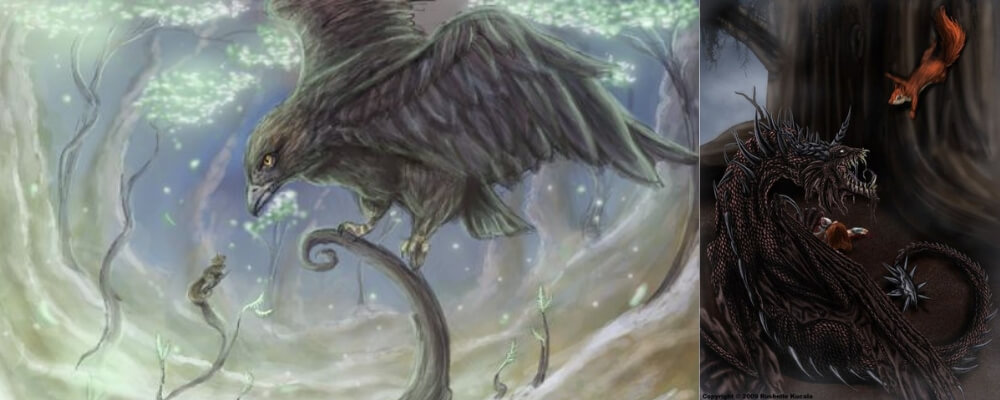
In some stories he is described as having the more sinister motive of convincing the two adversaries to use their powers to destroy the tree.
13. Sleipnir
Sleipnir was the horse of Odin. It had eight legs, so that it could have one leg in each of the Norse worlds.
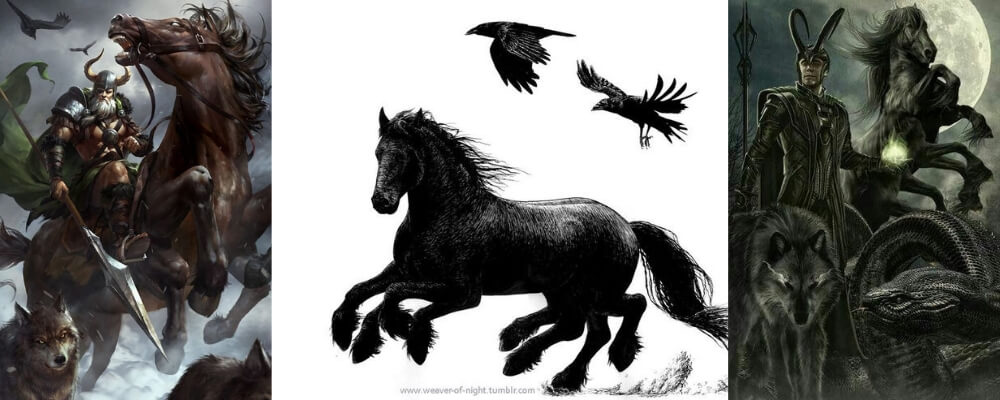
Loki is actually the mother of Sleipnir. Loki shapeshifted into a mare and was impregnated by the stallion of a giant.
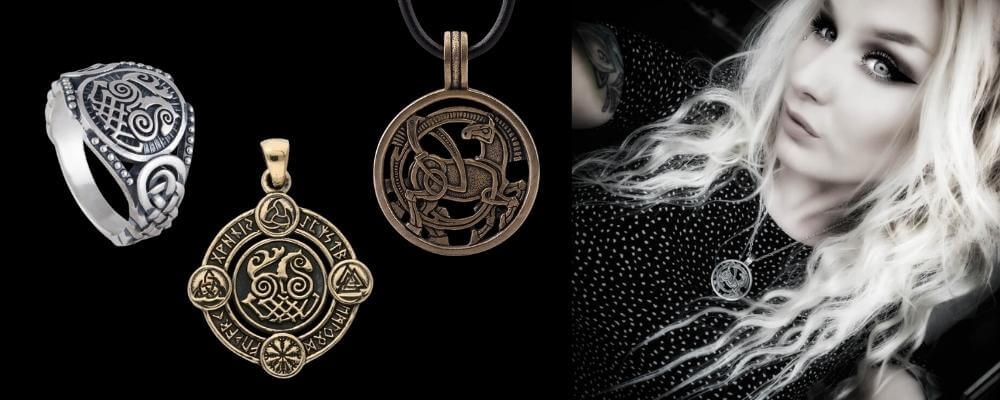
14. Trolls
Two different types of trolls are found in Norse myths. There are large ugly trolls that dwell in forests and mountains, and small gnome-like trolls that live underground in deep caves and caverns. They are generally depicted as not very intelligent and quite malevolent, but they can show kindness in exchange for a favour.
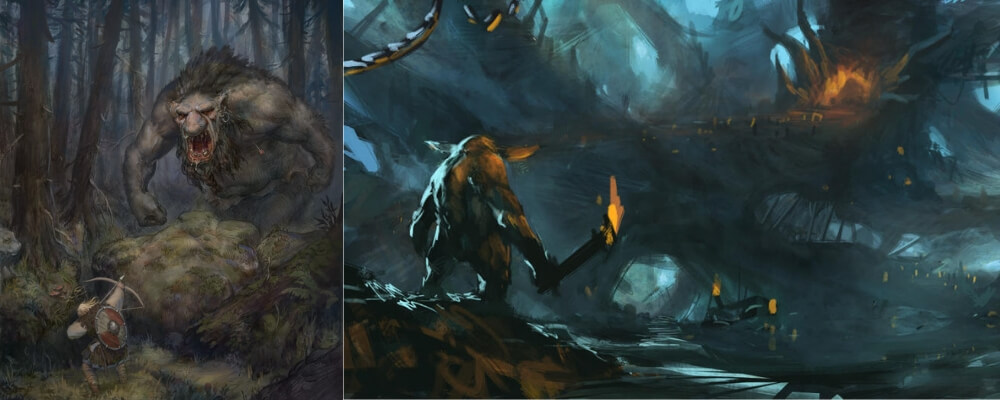
Trolls were thought to be responsible for the many boulders that cover the Scandinavian countryside. Some were used by them as weapons, others are trolls turned to stone by the sun.
15. Valkyries
Who are the Valkyries? The Valkyrie were female spirits in the service of the god Odin.
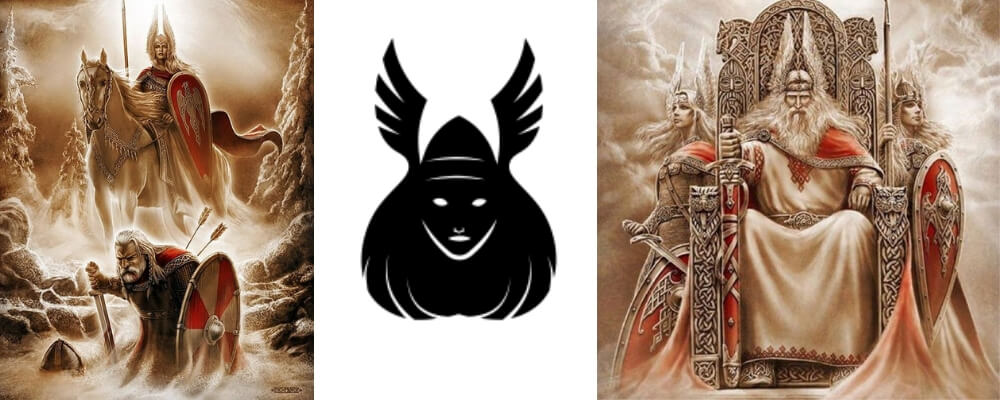
They were elegant, noble maidens that bore dead heroes to Valhalla, the heavenly home of Odin’s fallen army as they await Ragnarok. Valkyrie means ‘choosers of the slain’, and the Valkyrie not only worked for Odin, but also chose who lived and died in battles, using malicious magic to ensure their preferences.
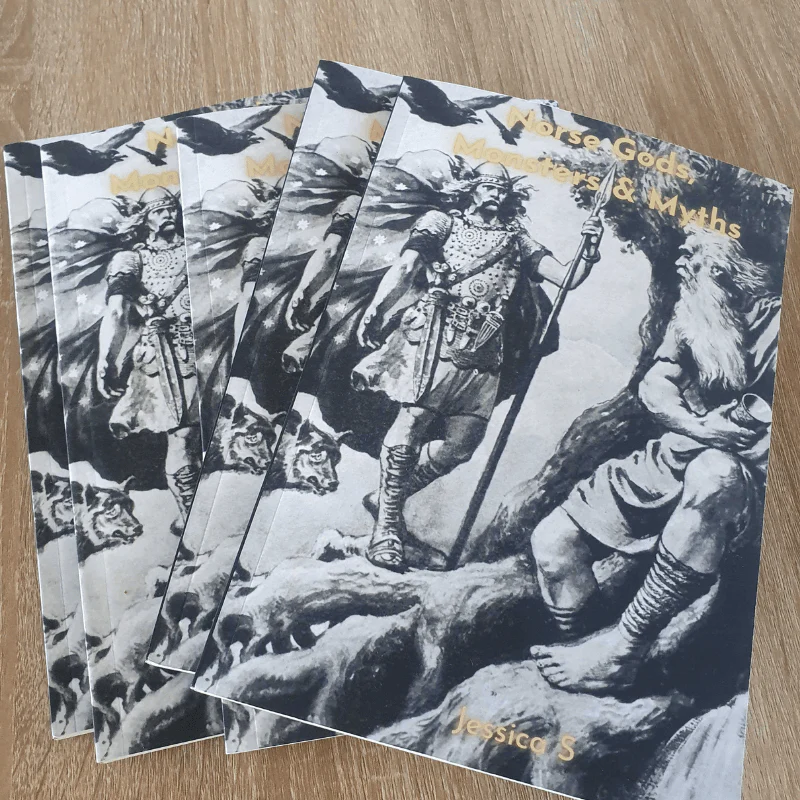
Get Your FREE e-Book
Norse Gods, Monsters & Myths
